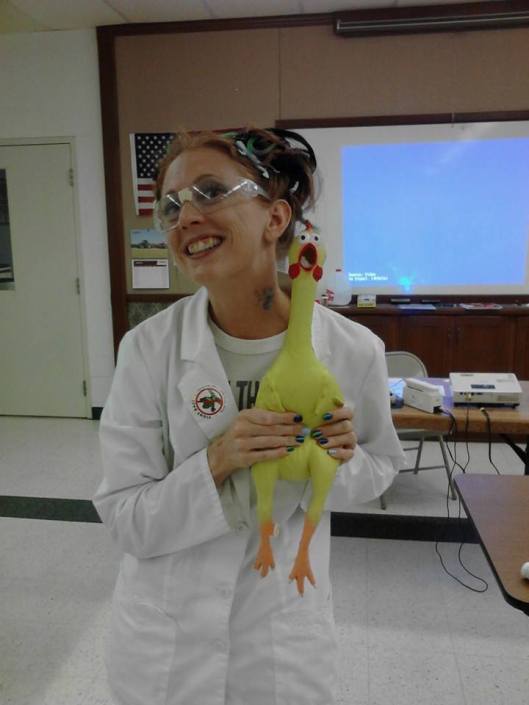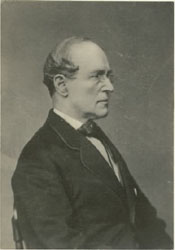©The following recipes may be considered a continuation on the post on buffalo [bison] in Alabama. Cookbooks weren’t being published in America during the heyday of buffalo cookery so while there are few actual recipes in early sources, there are many recorded instances of eating buffalo. As for the cooking, the following accounts, with a little imagination, will serve us well.
For this article, a buffalo ”chip” is not a piece of crunchy meat, and buffalo does not refer to a chicken wing swimming in hot sauce, or to a species of fish.
The prime cuts from a buffalo were the hump and the tongue followed in preference by the liver, ribs, and marrow bones. A sinful amount of meat went to waste when herds were slaughtered for their hides and, “the carcasses were left to the wolves and buzzards.” There was a market for salted buffalo tongues [sometimes referred to as pickled], but the harvesting was still sinfully wasteful, the tongue often being the only cut harvested from an animal.
Salted tongue, required removing enough of the salt to make it palatable when served. It was often boiled in successive waters (pouring off the water and replacing it with fresh water during the cooking process) or soaking it prior to cooking, again often in successive waters. “The salter [sic]meat is, the longer it should be boiled. If very salt, it is well to put it in soak over night; change the water while cooking…”. “Buffalo’s tongue should soak a day and a night, and boil as much as six hours”.
Buffalo ribs from the humps were much appreciated and could be roasted by propping them up near a fire. Let’s look at words penned b y Josiah Gregg for an idea of the quality of the meat that was so vastly wasted. “The flesh of the buffalo is, I think, as fine as any meat I ever tasted: The old hunter will not admit that there is anything equal to it. Much of its apparent savoriness, however, results perhaps from our sharpened ‘prairie appetites’ and our being usually upon salt provisions awhile before obtaining it. The flesh is of coarser texture than beef, more juicy, and the fat and lean better distributed. This meat is also very easy of digestion, possessing even aperients qualities. The circumstance that bulls of all ages, if fat, make good beef is a further proof of the superiority of buffalo meat…Of these, the udder is held as hardly second to the tongue in delicacy. But what the tail of the beaver is to the trapper, the tongue of the buffalo is to the hunter. Next to this are the marrow-bones, the tender-loins, and the hump-ribs.” The author acknowledged that many animals were wantonly slaughtered by travelers and hunters, but said hardly less was, “the still greater havoc made among them by the Indians, not only for meat, but often for the skins and tongues alone (for which they find a ready market amount their traders)…”.
Charles Murray said of choice cuts in the 1830’s, “…the ribs, and the back, especially the hump, are, if properly dressed, as sweet, tender, and delicious beef as the most delicate epicure could desire; and both the fat and marrow are certainly finer than those of any domesticated cattle…”.
Not sure what to do with marrow-bones? After roasting the bones, the marrow was removed. “…oh, shade of Eude, the marrow-bones! No man can guess what marrow amounts to until he has been to the Far West and eaten it as Wallace, who cooked on the plains for me, dressed it. The bone was brought to table in its full length, and they had some way of hitting it with the back of an axe which opened one side of it only, like the lid of a box. The bone, then, when this lid was removed, exposed in its entire length a regular white roll of unbroken marrow, beautifully done. When hot, as the lid had kept it, and put on thin toast, it was perfection! On inquiry I found that the two extreme ends of the marrow-bone only were placed on the red embers, and the heat of the bone itself dressed the marrow. As far as the bison meat went, it was precisely lean beef; with no more flavor than lean beef in England would have…“.
One writer wrote that it took a while to consume a whole buffalo which would have required smoking, drying, or salting to preserve it. “…for a long time, on the general bill of fare at Sydenham’s ranch, was buffalo rump, buffalo tongue, buffalo ribs, buffalo steak, boiled buffalo, jerked buffalo, and dried buffalo…”.
When cooked outdoors, rarely are vegetables or other dishes mentioned as accompaniments, the meat being consumed by itself or with bread or crackers and steaming hot coffee. “Meanwhile, the cook of each mess…has been preparing hot coffee; and offers it with the unleavened cakes which were baked over night against a spade or board, and some boiled or fried buffalo meat for breakfast: as a rarity, he gives them a morsel of fried pork.”
We can thank Frederick Townshend for a look at Native American cooking of buffalo meat, but we must look beyond his words for an accurate picture. Rare beef, or in this case buffalo, is much the standard today and would hardly be worth mentioning, but for Townshend it seems to have made an impression. “The Indian manner of cooking buffalo meat is simple in the extreme. Lighting a large log fire, they bend across it sticks of green wood, on which they hang large pieces of flesh. Then, sitting round the fire, they cut strips of meat off with their knives, and devour it half raw…”.
“Indians often use wood-ashes as a substitute for salt and never use salt with buffalo-meat; but their liking or preference comes from their habit of invariably broiling buffalo-meat on wood cinders or buffalo-chips” [now you know what chips are].
Recipes:
BUFFALO STEAKS. Rorer, Sarah Tyson. “Mrs. Rorer’s Philadelphia Cook Book.” 1886. Philadelphia.
Buffalo steaks are broiled precisely the same as beefsteak, seasoning only with butter, salt, and pepper. Buffalo meat may also be roasted or stewed.
Juliet Corson in “A Course of Lectures on the Principles of Domestic Economy and Cookery”, noted that her venison recipe worked quite well when cooking buffalo. The venison was browned in smoking hot butter on all sides and a Tablespoon of currant jelly added per pound of meat. “It will cook, if it is an inch thick, pretty well done in about twenty minutes. Season it with salt and pepper, and when it is done put it on the platter and pour the currant jelly and butter over it. The cooking of the jelly with the venison makes it a nice sauce or gravy. [1887]
Frances Owens tells us that, “Bear and buffalo meats are cooked substantially the same as beef or venison”.
PEMMICAN—TO PREPARE. Mrs. Owens.
Pemmican is made of the lean portions of venison, buffalo, etc. The Indian method is to remove the fat from the lean, dry the lean in the sun; then make a bag of the skin of the animal and put the lean pieces in loosely. To this must be added the fat of the animal, rendered into tallow, and poured in quite hot. This will cause all the spaces to be filled. When cold, put away for future use. In civilized life, a jar can be used in place of the bag. Pemmican may be cooked same as sausage, or eaten as dried beef. It is invaluable in long land explorations, and is of great use in sea voyages.
SOURCES:
Drury, Newton B., Director, National Par, Service. “The Comeback of the Bison”. Published in “The Rotarian” Dec. 1946.
Hooper, Edward James. “The Practical Farmer, Gardener and Housewife”. 1840. Cincinnati.
Gregg, Josiah. “Commerce of the Prairies”. 1851. Philadelphia.
Murray, Charles. “Travels in North America During the Years 1834, 1835 & 1836. 1839. London.
Berkeley, Grantley Fitzhugh. “The English Sportsman in the Western Prairies”. 1861. London.
Root, Frank A. “The Overland Stage to California.”
Cooke, Philip St. George. “Scenes and Adventures in the Army: Or, Romance of Military Life”. 1859. Philadelphia.
Townshend, Frederick. “Ten Thousand Miles of Travel, Sport, and Adventure.” 1869. London.
Blot, Pierre. “Hand-book of Practical Cookery.” 1884. NY
Rorer, Sarah Tyson. “Mrs. Rorer’s Philadelphia Cook Book.” 1886. Philadelphia.
Owens, Frances. “Mrs. Owens’ Cook Book. 1903. Chicago.
© ALL RIGHTS RESERVED. Victoria Rumble








You must be logged in to post a comment.